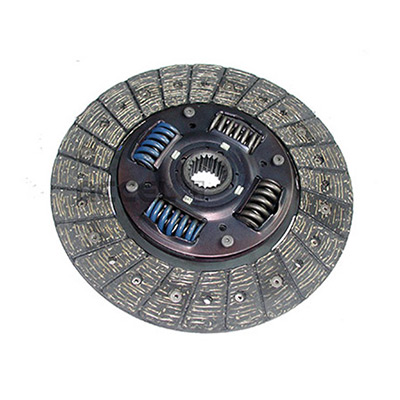- Arabic
- French
- Russian
- Spanish
- Portuguese
- Turkish
- Armenian
- English
- Albanian
- Amharic
- Azerbaijani
- Basque
- Belarusian
- Bengali
- Bosnian
- Bulgarian
- Catalan
- Cebuano
- Corsican
- Croatian
- Czech
- Danish
- Dutch
- Afrikaans
- Esperanto
- Estonian
- Finnish
- Frisian
- Galician
- Georgian
- German
- Greek
- Gujarati
- Haitian Creole
- hausa
- hawaiian
- Hebrew
- Hindi
- Miao
- Hungarian
- Icelandic
- igbo
- Indonesian
- irish
- Italian
- Japanese
- Javanese
- Kannada
- kazakh
- Khmer
- Rwandese
- Korean
- Kurdish
- Kyrgyz
- Lao
- Latin
- Latvian
- Lithuanian
- Luxembourgish
- Macedonian
- Malgashi
- Malay
- Malayalam
- Maltese
- Maori
- Marathi
- Mongolian
- Myanmar
- Nepali
- Norwegian
- Norwegian
- Occitan
- Pashto
- Persian
- Polish
- Punjabi
- Romanian
- Samoan
- Scottish Gaelic
- Serbian
- Sesotho
- Shona
- Sindhi
- Sinhala
- Slovak
- Slovenian
- Somali
- Sundanese
- Swahili
- Swedish
- Tagalog
- Tajik
- Tamil
- Tatar
- Telugu
- Thai
- Turkmen
- Ukrainian
- Urdu
- Uighur
- Uzbek
- Vietnamese
- Welsh
- Bantu
- Yiddish
- Yoruba
- Zulu
พ.ย. . 06, 2024 08:36 Back to list
Applications and Advantages of Ribbed Drive Belts in Mechanical Systems
Understanding Ribbed Drive Belts Function, Applications, and Benefits
Ribbed drive belts, also known as serpentine belts or multi-rib belts, are a crucial component in automotive and industrial systems. They play a vital role in connecting various parts and transferring power efficiently. This article delves into the design, function, applications, and advantages of ribbed drive belts, shedding light on why they are an essential element in many mechanical systems.
Design and Structure
Ribbed drive belts feature a unique construction characterized by a series of parallel ribs along their length. This ribbed design enhances the belt's grip on pulleys, allowing for efficient power transfer without slippage. The ribs, typically made of rubber or synthetic materials, interlock with the grooves of the pulleys they drive, maximizing friction and ensuring a secure fit.
These belts vary in length, width, and rib count, allowing for customization to suit specific machinery requirements. Most ribbed belts are designed for maximum stretch resistance, ensuring longevity and reliability. The materials used in their construction are often engineered to withstand high temperatures and varying environmental conditions, making them suitable for both automotive and industrial applications.
Functionality
The primary function of ribbed drive belts is power transmission. In automobiles, they connect the engine's crankshaft to various components such as the alternator, power steering pump, water pump, and air conditioning compressor. As the engine runs, it turns the crankshaft, which in turn moves the ribbed belt. This motion drives the auxiliary components, ensuring that essential systems operate smoothly and efficiently.
In industrial settings, ribbed drive belts are equally crucial
. They are commonly found in machines and equipment like conveyors, compressors, and mixers, where they facilitate power transfer from motors to moving parts. Their ability to transmit high levels of torque and operate at relatively low noise levels makes them ideal for various applications.Applications
ribbed drive belts

Ribbed drive belts are widely used across several industries, predominantly in automotive and manufacturing. In the automotive industry, these belts have largely replaced traditional V-belts due to their efficiency and versatility. Modern vehicles often rely on ribbed belts to drive multiple accessories off a single belt system, which simplifies design and reduces overall cost.
In manufacturing, ribbed belts are utilized in conveyor systems where they drive the movement of goods and materials. Their ability to operate under heavy loads makes them suitable for industries such as food processing, packaging, and material handling.
Moreover, ribbed drive belts are also found in applications such as agricultural machinery, HVAC systems, and various types of industrial equipment. Their widespread use is a testament to their effectiveness in facilitating repeated motion and power transfer.
Benefits
The advantages of ribbed drive belts are manifold. Firstly, they provide improved efficiency in power transmission. The ribbed construction allows for greater surface contact area with the pulleys, enhancing grip and reducing energy loss. This efficiency translates to lower fuel consumption in vehicles, contributing to improved fuel economy.
Secondly, ribbed drive belts have a longer lifespan compared to traditional belt types. Their robust design and high-quality materials resist wear and tear, minimizing the need for frequent replacements. This durability is particularly advantageous in industrial settings, where downtime can be costly.
Lastly, ribbed belts reduce noise during operation. Their design mitigates vibrations and ensures smoother operation, which is critical in environments where noise reduction is essential.
Conclusion
In summary, ribbed drive belts are an integral part of many mechanical systems, providing efficient power transmission in both automotive and industrial applications. Their innovative design, coupled with numerous advantages such as efficiency, durability, and noise reduction, makes them a preferred choice in modern machinery. Understanding the function and benefits of ribbed drive belts can help industries and consumers alike appreciate their role in powering the complex systems that surround us daily. As technology advances, the design and material science of ribbed belts will likely evolve, paving the way for even greater efficiency and reliability in the future.
-
Korean Auto Parts Timing Belt 24312-37500 For Hyundai/Kia
NewsMar.07,2025
-
7PK2300 90916-T2024 RIBBED BELT POLY V BELT PK BELT
NewsMar.07,2025
-
Chinese Auto Belt Factory 310-2M-22 For BMW/Mercedes-Benz
NewsMar.07,2025
-
Chinese Auto Belt Factory 310-2M-22 For BMW/Mercedes-Benz
NewsMar.07,2025
-
90916-02660 PK Belt 6PK1680 For Toyota
NewsMar.07,2025
-
drive belt serpentine belt
NewsMar.07,2025

